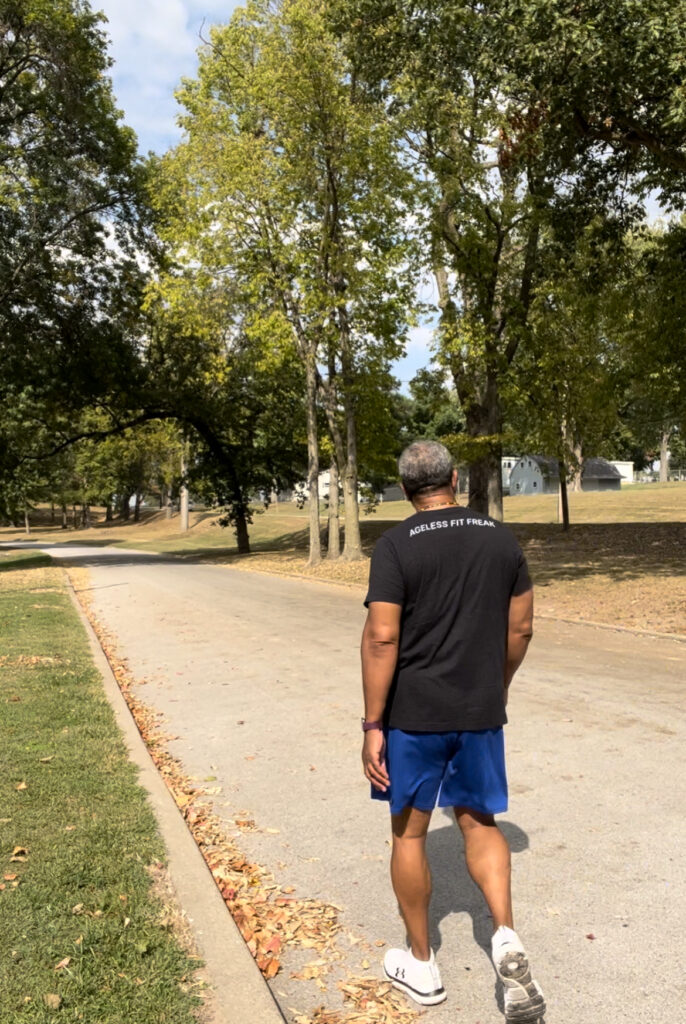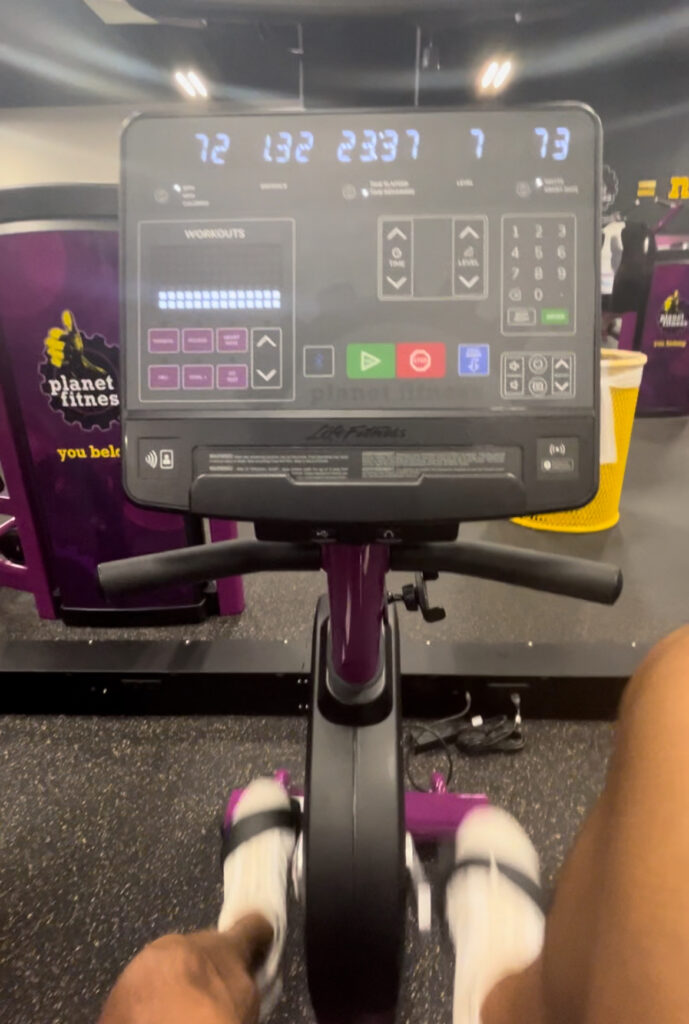Show of hands, who hates cardio?………. I see ya and I don’t blame ya, I hate it too. And I don’t care about, “what’s the best time” to do it. I have to get it in first, before my resistance training. Because if I wait until after, it probably won’t get done. But whether you hate it or love it, it has to be done. Especially when we start getting older. While strength training is the life enhancer, cardio is the life extender. It improves heart health, boosts energy levels and reduces the risk of chronic disease. However, when you’re planning your senior fitness program, it has to be smart, safe and efficient to avoid injuries that can interfere with your training and fitness goals. This guide will provide you with some smart and practical advice on how seniors should approach cardio safely to avoid injuries and who knows, you may even start enjoying your cardio sessions.
Benefits of Cardio Exercise for Older Adults
Cardiovascular exercise is basically any activity that increases your heart rate and breathing. It usually involves jogging, walking, running, rowing, climbing stairs, I think you get the picture. A lot of activities that are not fun but should be a part of any senior fitness program. For the older and the younger population, regular cardio workouts offer numerous benefits:
- Heart Health: Cardio exercise strengthens the heart improving its ability to pump blood efficiently and reducing the risk of heart disease.
- Weight Management: Any senior weight management program should include cardio because it will help maintain a healthy weight by burning calories and boosting metabolism.
- Enhanced Mood: Exercise releases endorphins, the feel-good hormones, which can alleviate stress, improve mood, reduce the symptoms of depression and anxiety, and give an overall sense of well-being.
- Improved Mobility and Balance: Cardio activities, especially those like jogging and running can help seniors with their coordination and balance, reducing the risk of injury from falls.
- Increased Stamina and Energy: Regular cardio can increase lung capacity which will allow seniors to participate in athletic activities like pickleball, softball and walking the course (golf) without getting tired as quickly and increase overall energy levels.
- Prepare for the Unexpected: Performing cardio on a regular basis will also prepare seniors for unexpected emergencies like getting a flat tire and having to walk a mile or two or needing to help a family member, friend or neighbor during an unforeseen event. What’s that phrase, “Shit happen”. Always be prepared.
Getting Started: Consult Your Doctor
If you are new to cardiovascular exercise, you should always consult with a physician before starting any type of senior fitness program. And if you suffer with chronic conditions like heart disease, arthritis or diabetes a doctor can advise you on intensity levels and suitable activities that are best for you.

Choosing the Right Cardio Activities
There are so many ways to do cardio it’s hard to count them all. Low intensity, medium intensity, high intensity, low to high intensity, high to low intensity, low impact, high impact, so many combinations. There are exceptions but for most seniors, especially if you’re just starting, low intensity and low impact is the best way to go. And if you decide to step it up,by all means step it up. Here are some of my favorites:
- Walking: Walking is the majority of my cardio these days. It’s one of the safest and most accessible forms of cardio. It’s low impact and low intensity. It can be done almost anywhere, requires no special equipment, and can be easily adjusted for intensity and duration.
- Swimming: I’ll be honest, I can’t swim a stroke. I never had the access as a kid and just never learned. But swimming or any kind of water aerobics are great cardio workouts plus it’s gentle on your joints while providing a full-body workout. The buoyancy of water reduces stress on the body, making it an ideal choice for those with arthritis or joint pain.
- Cycling: When I’m not walking either outside or on a treadmill, I’m usually on a stationary bicycle. But whether you’re on a stationary bike or a traditional bicycle, cycling is a low-impact exercise that can improve cardiovascular health without putting undue strain on the joints.
- Dancing: If you enjoy “shaking that booty” dancing is a fun way to get your heart rate up while also improving coordination and balance. Many community centers offer dance classes specifically designed for seniors or get yourself a Tik Tok page and show off your moves to the world.
- Low-Impact Aerobics: These classes are often available at gyms and community centers. They focus on gentle, rhythmic movements that elevate the heart rate without high-impact stress on the joints. If you’re not into formal classes, you can also find instruction online (YouTube, etc.) and perform your cardio at home, at your own pace.

Tips for Safe Cardio Workouts
To get the most out of your cardiovascular training while minimizing the risk of injuries, here are a few safety tips to think about before you start:
- Start Slowly: Begin with low intensity/low impact activities and when you feel like you’re ready to do more, gradually increase the duration and intensity as your fitness level improves. This approach will help minimize injuries and will condition your body for that next level.
- Warm Up and Cool Down: Always warm-up to prepare your muscles, cardiovascular system and your mind for exercise and a cool-down period is equally important to gradually lower your heart rate and prevent muscle stiffness.
- Stay Hydrated: Drink plenty of water with electrolytes before, during, and after your workout to stay hydrated, especially in hot or humid conditions.
- Wear Appropriate Gear: Don’t underestimate the importance of comfortable, well-fitting shoes. Especially as we get older. We need good support and cushioning because our bodies change with age. For outdoor activities, dress in layers to accommodate changing weather conditions.
- Listen to Your Body: Pay attention to any signs of discomfort or pain. If you experience dizziness, shortness of breath, chest pain, or any other unusual symptoms, stop exercising immediately and seek medical advice. Always carry an ID or some form of identification just in case of emergencies.
- Mix It Up: Variety is the spice of life. Keep your workouts fun and enjoyable by switching things up every now and then. It will keep things interesting and allows you to work different muscle groups.This approach will help reduces the risk of injuries from overtraining and kill the boredom.
Creating a Balanced Routine
The American Heart Association recommends that older adults should aim for at least 150 minutes of moderate-intensity aerobic activity per week. This can be broken down into manageable sessions, such as 30 minutes of exercise five days a week. Adding some strength training and flexibility exercises into your routine will give you a well-rounded workout. Newbies should always take baby steps. Start off with cardio until your body starts getting used to moving then start adding in some resistance training and stretching. Injuries are the last thing you want when you’re just starting out.
Staying Motivated
Motivation is great in the beginning, but it will so disappear and that’s when discipline and consistency will have to take over. Here are some strategies:
- Set Realistic Goals: Establish achievable and measurable short-term and long-term goals to keep yourself focused.
- Track Your Progress: Use a journal, fitness app, or wearable device to monitor your activity levels and celebrate your achievements.
- Find a Workout Buddy: Exercising with a friend or joining a group class can make workouts more enjoyable and provide a sense of accountability.
- Choose Activities You Enjoy: Engaging in activities that you find fun and enjoyable increases the likelihood of sticking with your routine.
- Set a Schedule: Schedule your workouts at the same time on the same days each week. Develop a routine and let everyone know your routine. Also let them know not to bother you during your allotted times that you’ve set aside for your workouts. This time is for you not them.
Conclusion
Cardio workouts offer numerous benefits for older adults, from improved heart health to enhanced mood and energy levels. By selecting suitable activities, following safety guidelines, creating a routine and staying disciplined, seniors can enjoy a safe and effective cardio routine that enhances their overall well-being. Always remember to consult your healthcare provider before starting any new exercise program and listen to your body’s signals to ensure a healthy and enjoyable fitness journey.
